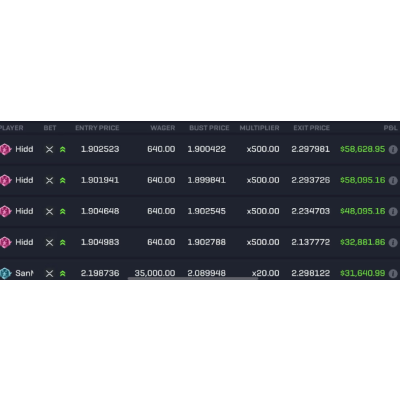- Solana's on-chain trading ecosystem is generating surprisingly high revenues.
- That's because of the network's unique architecture and the possibilities it affords traders.
- As a sector in its own right, Solana trading-linked activity is the third most profitable financial category in crypto, behind stablecoins and layer 1s.
- There's a lot of money to be made in providing infrastructure for Solana on-chain markets.
That's according to David Duong and David Han, head of institutional research and institutional research analyst at crypto exchange Coinbase, who made the case in a Friday report that, if one looks at Solana's on-chain trading ecosystem as a financial sector in its own right, it's the third-most-profitable category in crypto — right behind stablecoins and layer 1s.
"Solana's trading-linked activity regularly accounts for 75-90% of [Solana] transaction fees, substantially higher than that of Ethereum and other networks like Base and Arbitrum," Duong told CoinDesk. "While layer 2 solutions have also shown growth and innovation, they face different scalability challenges and user fragmentation issues compared to Solana," Duong added. "Solana's approach, especially its fee dynamics and user activity patterns, remains distinct."
Coinbase somewhat put its money where its mouth is this week, announcing cbBTC, which brings the ability to trade, lend and borrow bitcoin (BTC) on Solana — crucial functionality likely needed for decentralized finance, or DeFi, to take off in that ecosystem.
Read more: Coinbase Brings Bitcoin to Solana, Spurring High Hopes for DeFi Surge
By the numbers: Tether's USDT and Circle's USDC stablecoins have produced $93 million and $28 million in revenue, respectively, in the last seven days, according to DefiLlama data, while the Ethereum, Tron and Solana networks saw $19 million, $11 million and $9.6 million. Solana-based protocols and trading bots, meanwhile, are right behind. Trading bot platform Photon and memecoin powerhouse pump.fun have both generated over $6 million in the last seven days, exceeding Ethereum-based decentralized finance, or DeFi, heavyweights such as Maker, Lido or Aave in terms of revenue.
That's where Telegram trading bots — which help users buy and sell memecoins even faster — step in. "The magnitude of revenue generated by Telegram trading bots is surprising, even exceeding that of pump.fun," the Coinbase analysts wrote. The most profitable bots, like Photon, Bankbot and Trojan, are all exclusively based on Solana, the report noted. "This suggests that a large number of traders on Solana are less sensitive to execution fees, perhaps due to the higher volatility (and also lower liquidity) of the underlying assets," the analysts wrote.
"What we've also uncovered in our research is that Solana's fee spending generally peaks later in the day, coinciding with the U.S. West Coast hours, which suggests a distinct cohort of active users there," Duong told CoinDesk.
Tailoring an on-chain ecosystem to users
Solana builders are aware that the network's on-chain environment has produced unique dynamics — and some of them are trying to take advantage of that to the fullest. For example, Zeta Markets, a decentralized exchange, or DEX, that offers perpetual contracts, wants its users to be able to buy their memecoins and take on leverage without needing to use multiple wallets.
"Traders are like, 'Why would I go trade on a centralized exchange [CEX]?' They have all their funds already on the Solana chain," Zeta Markets Founder Tristan Frizza told CoinDesk in an interview. "If you already have your Phantom wallet with all your memecoins, then you might want to hedge it out using perpetual futures. That's like one click away [with DEXs]."
Ease of use is a massive draw, but it also implies listing risky coins that aren't yet present on any CEX, Frizza said. Not to mention the ability to use Solana tokens as collateral for the perps positions, instead of simply stablecoins. "No one wants to be holding stables in a bull market," Frizza said. "They just want to take whatever's in their wallet and chuck this into their margin account."
All of this ends up showing up in the data. The convenience of trading on Solana DEXs has led these protocols' volumes to deviate from Coinbase's — even as Ethereum DEX volumes have become more correlated.
"This suggests that the trading activity on Solana is relatively decoupled from CEX activity and appears to be forming its own distinct ecosystem," the Coinbase report said.

22 December 2024



 BTC
BTC ETH
ETH USDT
USDT USDC
USDC TRX
TRX